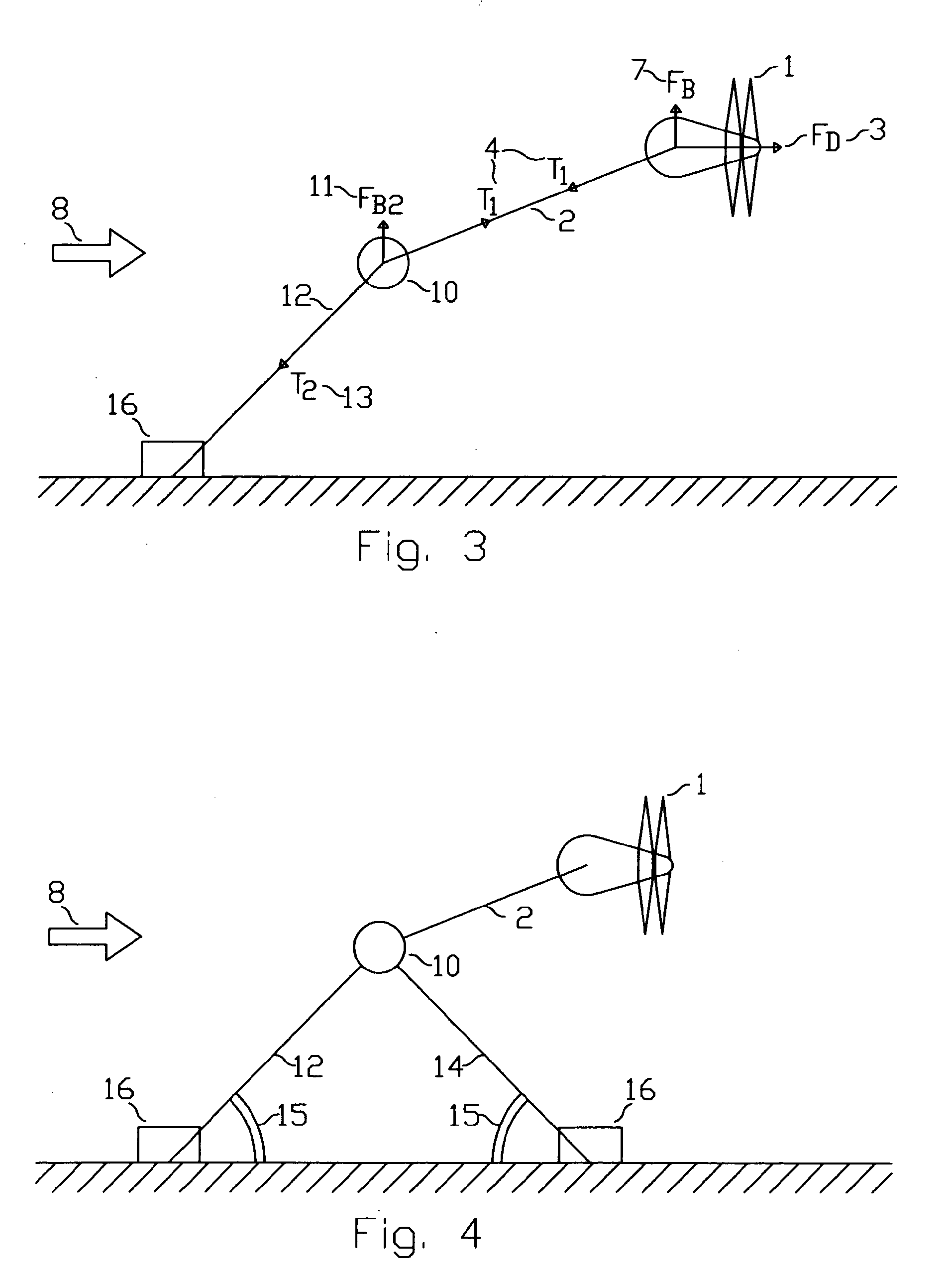Mooring System for Tidal Stream and Ocean Current Turbines
a technology of mooring system and turbine blade, which is applied in the direction of tidal stream/damless hydropower, sea energy generation, artificial islands, etc., can solve the problems of high drag force of horizontal or vertical axis turbines used to extract energy from the kinetic energy within a moving body of water, the risk of the turbine or the turbine being impacted by the seabed, and the surface floating device experiencing motions induced by surface waves to the detriment of the turbine or
- Summary
- Abstract
- Description
- Claims
- Application Information
AI Technical Summary
Benefits of technology
Problems solved by technology
Method used
Image
Examples
Embodiment Construction
[0042]While various solutions for resisting the vertical downwards acting force induced by a seabed tethered turbine device are described in the Background to the Invention, the invention described hereunder relates to use of a submerged buoyant body to resist the mooring tension induced downwards force. In this arrangement, the buoyancy required to maintain the mooring system in the desired configuration can be provided by the buoyancy in the submerged buoyant body. At a minimum, the turbine need only be neutrally or marginally positively buoyant.
[0043]FIG. 1 illustrates the basic concept of a submerged turbine device with twin counter-rotating turbines (1) tethered by a mooring line (2) which is fixed at one end to the seabed by an anchor (16). The forces acting on the mooring line used to constrain a horizontal axis turbine device placed in a flow of water in a mooring system of the prior art are illustrated. The turbine device which is assumed to be neutrally buoyant experiences...
PUM
 Login to View More
Login to View More Abstract
Description
Claims
Application Information
 Login to View More
Login to View More - R&D
- Intellectual Property
- Life Sciences
- Materials
- Tech Scout
- Unparalleled Data Quality
- Higher Quality Content
- 60% Fewer Hallucinations
Browse by: Latest US Patents, China's latest patents, Technical Efficacy Thesaurus, Application Domain, Technology Topic, Popular Technical Reports.
© 2025 PatSnap. All rights reserved.Legal|Privacy policy|Modern Slavery Act Transparency Statement|Sitemap|About US| Contact US: help@patsnap.com



